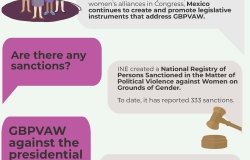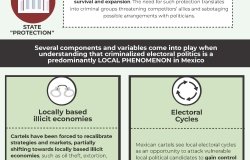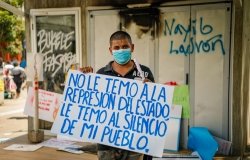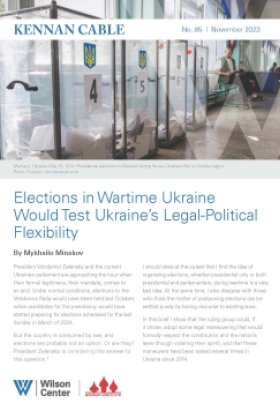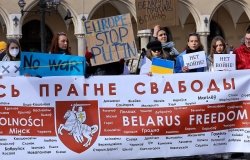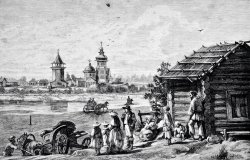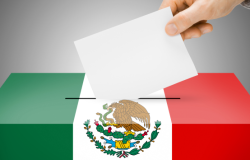Report: Violence and Tunisia’s Salafi Challenge
Ennahda, the moderate Islamist party leading Tunisia’s coalition government, has prudently managed radical religious groups through dialogue, persuasion and co-optation, according to a new report by the International Crisis Group. But the recent assassination of opposition politician Chokri Belaid has thrown the country into a crisis, and raised the threat of violence.
Ennahda, the moderate Islamist party leading Tunisia’s coalition government, has prudently managed radical religious groups through dialogue, persuasion and co-optation, according to a new report by the International Crisis Group. But the recent assassination of opposition politician Chokri Belaid has thrown the country into a crisis, and raised the threat of violence. The authorities have not yet identified the culprits but many blame militant Islamists. Yet Tunisia’s jihadis seem to be currently focused on preaching and outreach.
Ultra-conservative Salafis have become key economic actors by filling in for the lack of public services in poor villages and urban centers. But the report warns that some could turn to violence if the authorities do not form an independent committee to investigate Belaid’s death, and establish a national council for dialogue to deal with the political crisis. The following are excerpts from the report’s executive summary.
… At a time when the country increasingly is polarised and the situation in the Maghreb increasingly shaky, Tunisia must provide differentiated social, ideological and political answers to three distinct problems: the marginalisation of young citizens for whom Salafism – and, occasionally, violence – is an easy way out; the haziness that surrounds both An-Nahda’s views and the country’s religious identity; and the jihadi threat that ought to be neither ignored, nor exaggerated.
As elsewhere throughout the region, the Salafi phenomenon has been steadily growing – both its so-called scientific component, a quietist type of Islamism that promotes immersion in sacred texts, and its jihadi component, which typically advocates armed resistance against impious forces. It made initial inroads under Ben Ali’s authoritarian regime, a response to the repression inflicted on Islamists in general and An-Nahda in particular. A new generation of young Islamists, relatively unfamiliar with An-Nahda, has become fascinated by stories of the Chechen, Iraqi and Afghan resistance.
All that was changed by the 2010-2011 uprising. Scientific Salafis, rather discreet and loyal under Ben Ali, began to both vigorously promote their more doctrinaire ideas and pressure An-Nahda, notably on the role of Sharia (or Islamic law) in the new constitution. For their part, jihadis back armed struggle outside of Tunisia, even recruiting fighters for the cause, notably in Syria. Yet they claim to have renounced violence in their own country. Tunisia, they assert, no longer is a land of jihad. It is a land of preaching in which jihadis should take root peacefully, taking advantage of general disorder and the emergence of lawless areas in order to advance Islamic law. As a result, non-Islamists have grown more and more anxious, many among them accusing An-Nahda of conniving with the Salafis and of sharing their ultimate goals.
For now, despite the former regime’s ouster, the security vacuum, economic problems, strikes and various protest movements as well as the release and return from exile of numerous jihadis, Tunisia has experienced neither armed conflict, nor widespread violence nor major terrorist attack. Most instances of Salafi violence – the most striking of which was the 14 September 2012 assault on the U.S. embassy – have been more dramatic than deadly. An-Nahda played no small part, helping to avert the worst thanks to its prudent management of radical religious groups through a mix of dialogue, persuasion and co-optation.
Yet, such management has its limitations. An-Nahda finds itself in an increasingly uncomfortable position, caught between non-Islamists who accuse it of excessive leniency and laxity in dealing with the security threat and Salafis who denounce it whenever it takes a harder line. Based on circumstances – a flare-up in violence or a wave of arrests – the party is condemned by either the former or the latter. An-Nahda itself is divided: between religious preachers and pragmatic politicians as well as between its leadership’s more flexible positions and the core beliefs of its militant base. Politically, such tensions give rise to an acute dilemma: the more the party highlights its religious identity, the more it worries non-Islamists; the more it follows a pragmatic line, the more it alienates its constituency and creates an opening for the Salafis.
There is not much doubt that the non-Islamist opposition has displayed excessive and premature alarm and that it sometimes levels unsubstantiated accusations. Nor is there much question that it is finding it hard to accept the reality of Islamists governing their country. But the fact that they are exaggerated does not mean that these fears are baseless. Rather, it means that one must clearly define and distinguish them, and offer finely-tuned remedies. To arbitrarily lump together incidents linked to poverty and unemployment, attempts to impose a strict moral order, a political assassination and jihadi violence would only draw Salafis toward their more radical wings.
The first trend involves the growing presence of militant Salafis in poor neighbourhoods. They have stepped in to fill the vacuum created by atrophying public services in marginalised areas; in some places, they have become key economic actors. They are known to help with schooling and serve as mediators in local conflicts, administrative issues and even marital problems. In many poor villages and urban centres, they are deeply engaged in the informal economy.
The second trend has to do with the spread of a more dogmatic form of religious expression, signalling a tug of war between two conceptions of Islam, one more and the other less tolerant. Initially relatively minor, vigilante-style violence has become increasingly commonplace; some citizens are reluctant to conduct their business publicly, fearful of provoking the Salafis’ ire. The Salafis’ influence also is manifested through their control over places of worship and of learning. An-Nahda wagers that this radicalisation of religious discourse is a temporary phenomenon, the unavoidable letting-out of pent-up frustrations after years of repression. It is confident that, by integrating the Salafis into the political system, they will become more moderate. But many party critics view this as a risky gamble that will hasten society’s gradual Islamisation from below.
The third trend concerns the existence of armed groups. They have yet to conduct large-scale operations. True, many Tunisian jihadis have been departing for Syria, Mali or Algeria, where they constituted a large portion of the hostage-takers at the In Amenas gas plant. But most jihadis seem willing to focus on proselytising in Tunisia and, at least for now, are not prepared to engage in more serious violence on its soil.
Yet this could get worse. Instability in the Maghreb, porous borders with Libya and Algeria, as well as the eventual return of jihadis from abroad, could spell trouble. Already, the government has had to harden its stance given the rise in violent incidents; the jihadis’ tougher discourse vis-à-vis An-Nahda; and growing pressure from parts of public opinion, elements within the interior ministry and, in the wake of the attack on their ambassador, the U.S. As a result, relations between Salafis-jihadis and An-Nahda followers have deteriorated. This could lead to a vicious cycle between intensified repression and Salafi radicalisation.
The government and An-Nahda face considerable challenges, made all the more urgent by Chokri Belaïd’s murder. The most immediate task is to resolve the current political crisis. Beyond that, it will be to devise responses calibrated to these distinct problems while avoiding a cookie-cutter approach that would stigmatise the most devout of their citizens; provide greater coherence to an increasingly cacophonous religious space while reassuring secularists; bolster law and order without embracing an exclusively security agenda and while reforming the police and judiciary; and, finally, strengthen cooperation with neighbouring countries in a tense and chaotic context.
In the absence of an appropriate answer by the authorities and the dominant Islamist party, violence in all its shades – whether tied to social, demographic, urban, political or religious causes – could well cross a perilous threshold.
Click here for the executive summary and the full report (in French).
Related Program

The Islamists
Learn more about Hamas and how it relates to similarly aligned organizations throughout the region. Read more
